An enteric virus can replace the beneficial function of commensal bacteria
- PMID: 25409145
- PMCID: PMC4257755
- DOI: 10.1038/nature13960
An enteric virus can replace the beneficial function of commensal bacteria
Abstract
Intestinal microbial communities have profound effects on host physiology. Whereas the symbiotic contribution of commensal bacteria is well established, the role of eukaryotic viruses that are present in the gastrointestinal tract under homeostatic conditions is undefined. Here we demonstrate that a common enteric RNA virus can replace the beneficial function of commensal bacteria in the intestine. Murine norovirus (MNV) infection of germ-free or antibiotic-treated mice restored intestinal morphology and lymphocyte function without inducing overt inflammation and disease. The presence of MNV also suppressed an expansion of group 2 innate lymphoid cells observed in the absence of bacteria, and induced transcriptional changes in the intestine associated with immune development and type I interferon (IFN) signalling. Consistent with this observation, the IFN-α receptor was essential for the ability of MNV to compensate for bacterial depletion. Importantly, MNV infection offset the deleterious effect of treatment with antibiotics in models of intestinal injury and pathogenic bacterial infection. These data indicate that eukaryotic viruses have the capacity to support intestinal homeostasis and shape mucosal immunity, similarly to commensal bacteria.
Figures
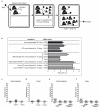
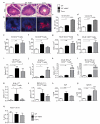




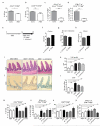

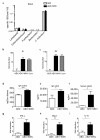
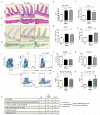

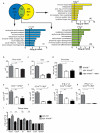
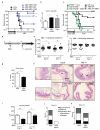
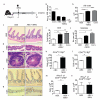
Comment in
-
Microbiology: a backup for bacteria.Nature. 2014 Dec 4;516(7529):42-3. doi: 10.1038/nature13938. Epub 2014 Nov 19. Nature. 2014. PMID: 25409141 No abstract available.
-
Microbiota: A viral understudy for commensal bacteria.Nat Rev Immunol. 2015 Jan;15(1):4. doi: 10.1038/nri3788. Epub 2014 Nov 28. Nat Rev Immunol. 2015. PMID: 25430963 No abstract available.
-
Gut microbiota: a 'friendly' gut virus?Nat Rev Gastroenterol Hepatol. 2015 Jan;12(1):6. doi: 10.1038/nrgastro.2014.220. Epub 2014 Dec 9. Nat Rev Gastroenterol Hepatol. 2015. PMID: 25488674 No abstract available.
Similar articles
-
IFN-I and IL-22 mediate protective effects of intestinal viral infection.Nat Microbiol. 2019 Oct;4(10):1737-1749. doi: 10.1038/s41564-019-0470-1. Epub 2019 Jun 10. Nat Microbiol. 2019. PMID: 31182797 Free PMC article.
-
Microbiota: A viral understudy for commensal bacteria.Nat Rev Immunol. 2015 Jan;15(1):4. doi: 10.1038/nri3788. Epub 2014 Nov 28. Nat Rev Immunol. 2015. PMID: 25430963 No abstract available.
-
The Intestinal Microbiome Primes Host Innate Immunity against Enteric Virus Systemic Infection through Type I Interferon.mBio. 2021 May 11;12(3):e00366-21. doi: 10.1128/mBio.00366-21. mBio. 2021. PMID: 33975932 Free PMC article.
-
Distinct Effects of Type I and III Interferons on Enteric Viruses.Viruses. 2018 Jan 20;10(1):46. doi: 10.3390/v10010046. Viruses. 2018. PMID: 29361691 Free PMC article. Review.
-
Initiation and resolution of mucosal inflammation.Immunol Res. 2004;29(1-3):241-52. doi: 10.1385/IR:29:1-3:241. Immunol Res. 2004. PMID: 15181286 Review.
Cited by
-
Pathobiont release from dysbiotic gut microbiota biofilms in intestinal inflammatory diseases: a role for iron?J Biomed Sci. 2019 Jan 3;26(1):1. doi: 10.1186/s12929-018-0495-4. J Biomed Sci. 2019. PMID: 30602371 Free PMC article. Review.
-
Type I/II Interferon in HIV-1-Infected Patients: Expression in Gut Mucosa and in Peripheral Blood Mononuclear Cells and Its Modification upon Probiotic Supplementation.J Immunol Res. 2018 Aug 12;2018:1738676. doi: 10.1155/2018/1738676. eCollection 2018. J Immunol Res. 2018. PMID: 30186879 Free PMC article.
-
Mouse mammary tumor virus is implicated in severity of colitis and dysbiosis in the IL-10-/- mouse model of inflammatory bowel disease.Microbiome. 2023 Mar 3;11(1):39. doi: 10.1186/s40168-023-01483-4. Microbiome. 2023. PMID: 36869359 Free PMC article.
-
Autophagy proteins suppress protective type I interferon signalling in response to the murine gut microbiota.Nat Microbiol. 2018 Oct;3(10):1131-1141. doi: 10.1038/s41564-018-0229-0. Epub 2018 Sep 10. Nat Microbiol. 2018. PMID: 30202015 Free PMC article.
-
Identification of Antinorovirus Genes in Human Cells Using Genome-Wide CRISPR Activation Screening.J Virol. 2018 Dec 10;93(1):e01324-18. doi: 10.1128/JVI.01324-18. Print 2019 Jan 1. J Virol. 2018. PMID: 30305350 Free PMC article.
References
-
- Donaldson EF, Lindesmith LC, Lobue AD, Baric RS. Norovirus pathogenesis: mechanisms of persistence and immune evasion in human populations. Immunol Rev. 2008;225:190–211. - PubMed
Supplemental references
Publication types
MeSH terms
Substances
Associated data
- Actions
- Actions
Grants and funding
LinkOut - more resources
Full Text Sources
Other Literature Sources
Molecular Biology Databases

